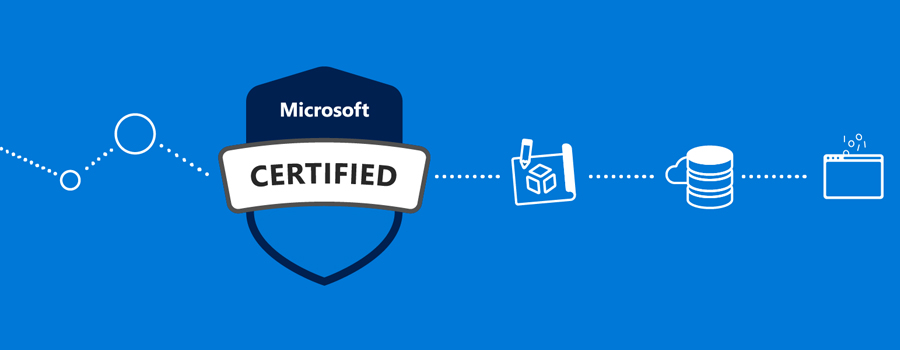Demonstrate Your Skills as a Database Professional with Both Onsite and Cloud-Based Databases with our MCSA: SQL Server Database Developer Boot Camp.
What is MCSA: SQL Server 2016 Database Development?
MCSA: SQL Server 2016 Database Development is an associate level certification within Microsoft’s Official Curriculum (MOC). The focus of this certification is to validate your expertise in building and implementing databases across multiple organizations. The certification itself is made up of two exams: 70-761: Querying with Transact-SQL and 70-762: Developing SQL Databases, typically this certification is geared towards professionals (database administrators, system engineers, and developers) who have two or more years of writing queries experience. Even though this certification is retiring at the end of the year it will remain active and recognized in the technology community for an additional two years. This certification will always remain relevant and highly respected as companies continually rely on server technologies.

What Can I Do With This Certification?
Database development is an imperative skill necessary to multi-scale businesses. The focus of MCSA: SQL Server 2016 Database Development is to allow professionals to query data across multiple platforms while utilizing Transact-SQL and develop SQL databases. Within the last thirty plus years database platforms have come and gone. However, database technology is a vital element in computing tasks and applications and has only become more of a necessity for businesses especially with the introduction of the Cloud. According to recent research the median salary for a Database Developer is $93,750, with a higher than average job growth rate of 10%. Even with the introduction of Windows Server 2019, there has been a 28% increase in businesses utilizing Windows Server 2016. The need for businesses to facilitate their data in an optimally efficient way is more and more imperative as companies become more dependent on onsite and cloud-based databases. If you are just introducing yourself to Windows Server and prefer the fastest way to certification, start with the MCSA.
How Can I Get Certified?
There is no question that earning the MCSA: SQL Server 2016 Database Development certification will provide you with the credibility and the experience necessary to secure your position or garner a higher salary. With the growing demand for this role traditional methods of education (colleges/universities) cannot keep up in supplying qualified candidates. Whereas TechSherpas365 offers multiple teaching methods for this certification the most effectual method is to enroll in the boot camp. By offering technology-focused, short termed accelerated learning programs this method has proven its efficiency in providing the necessary skills and requirements to obtaining certification. If you are interested in learning more contact us here.


 CompTIA A+ first launched in 1993, and since 2001 has been refreshed every three years to ensure the topics covered keep pace with what’s happening in IT. Employers, subject-matter experts and IT pros working in the field guide us in what they look for in help desk technicians, technical support specialists and other jobs related to CompTIA A+ to make sure we’re covering the skills that are needed in today’s world. With the launch of the new CompTIA A+ came many questions, so we’ve set out to answer them here. Keep reading to learn more about the
CompTIA A+ first launched in 1993, and since 2001 has been refreshed every three years to ensure the topics covered keep pace with what’s happening in IT. Employers, subject-matter experts and IT pros working in the field guide us in what they look for in help desk technicians, technical support specialists and other jobs related to CompTIA A+ to make sure we’re covering the skills that are needed in today’s world. With the launch of the new CompTIA A+ came many questions, so we’ve set out to answer them here. Keep reading to learn more about the 




